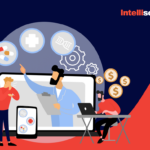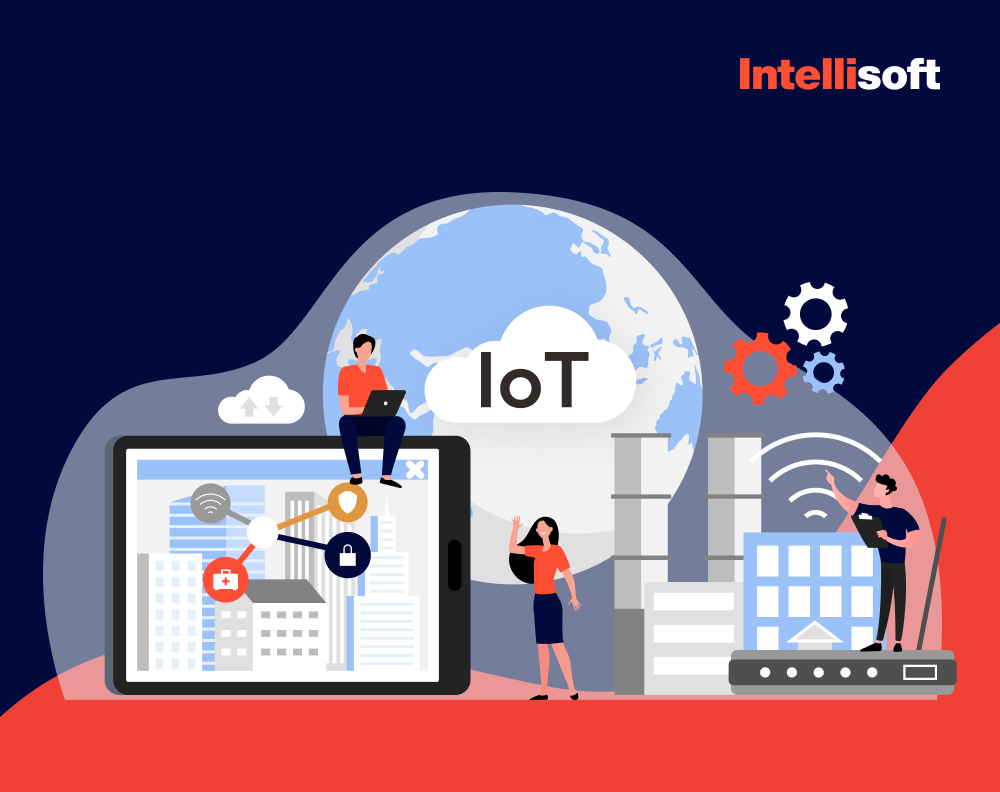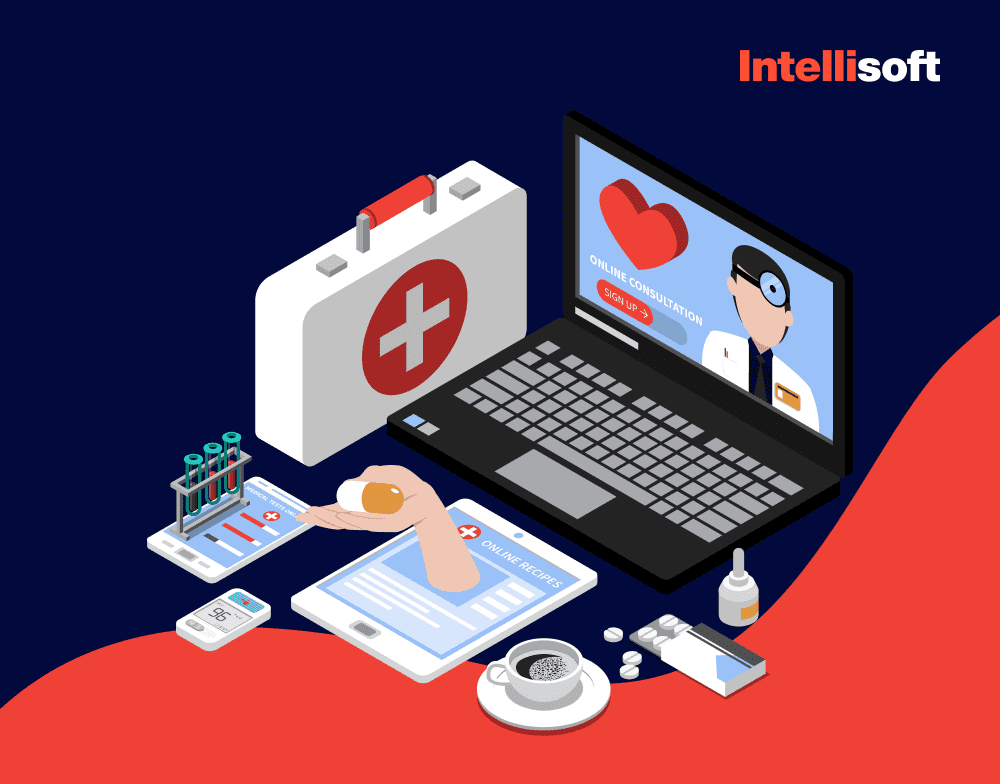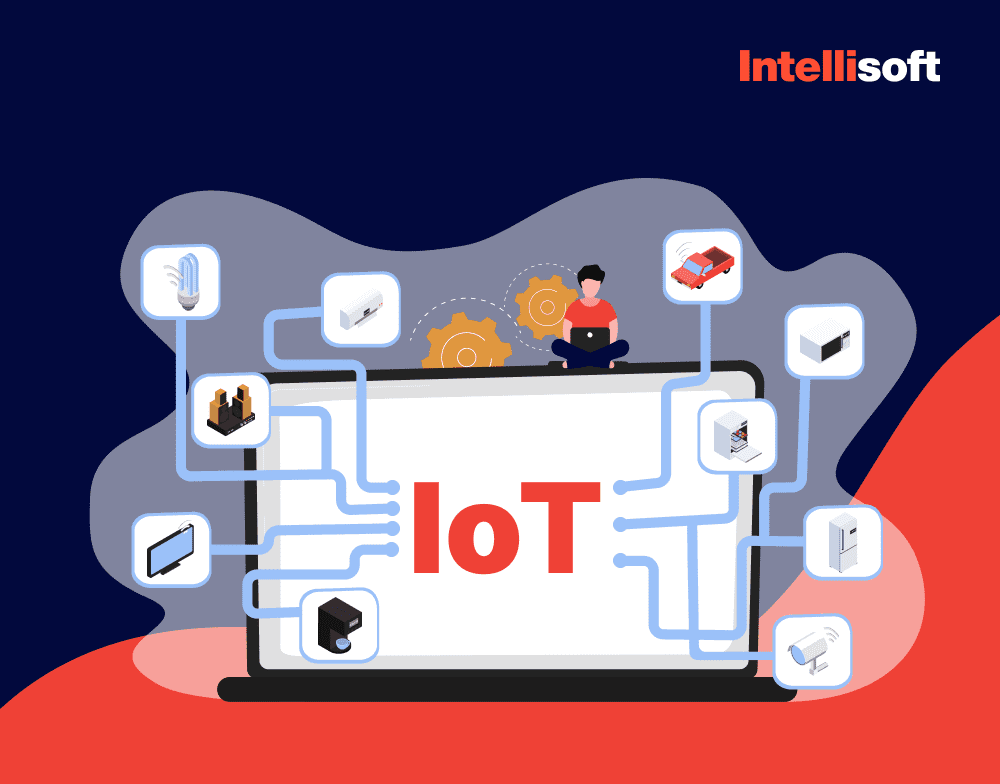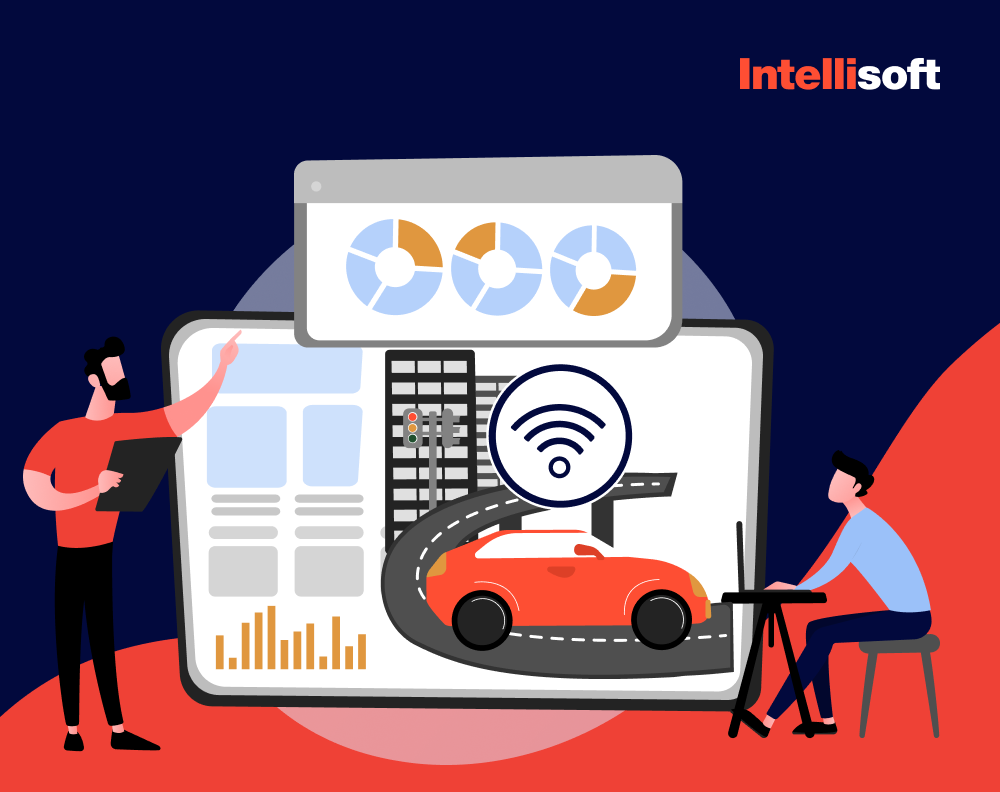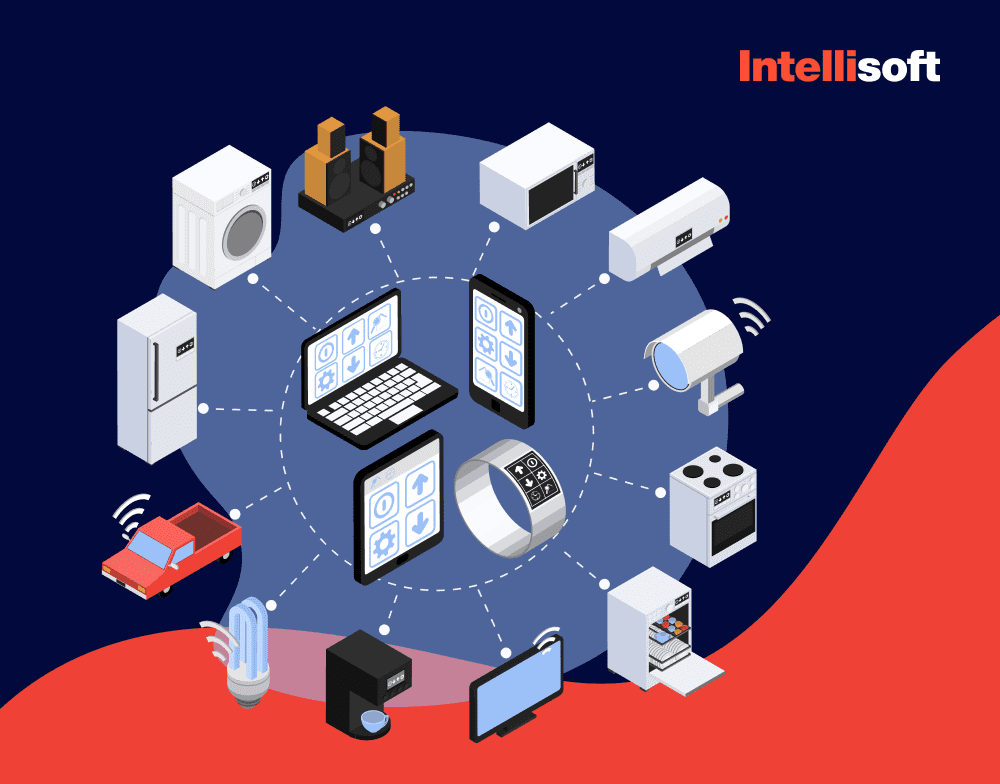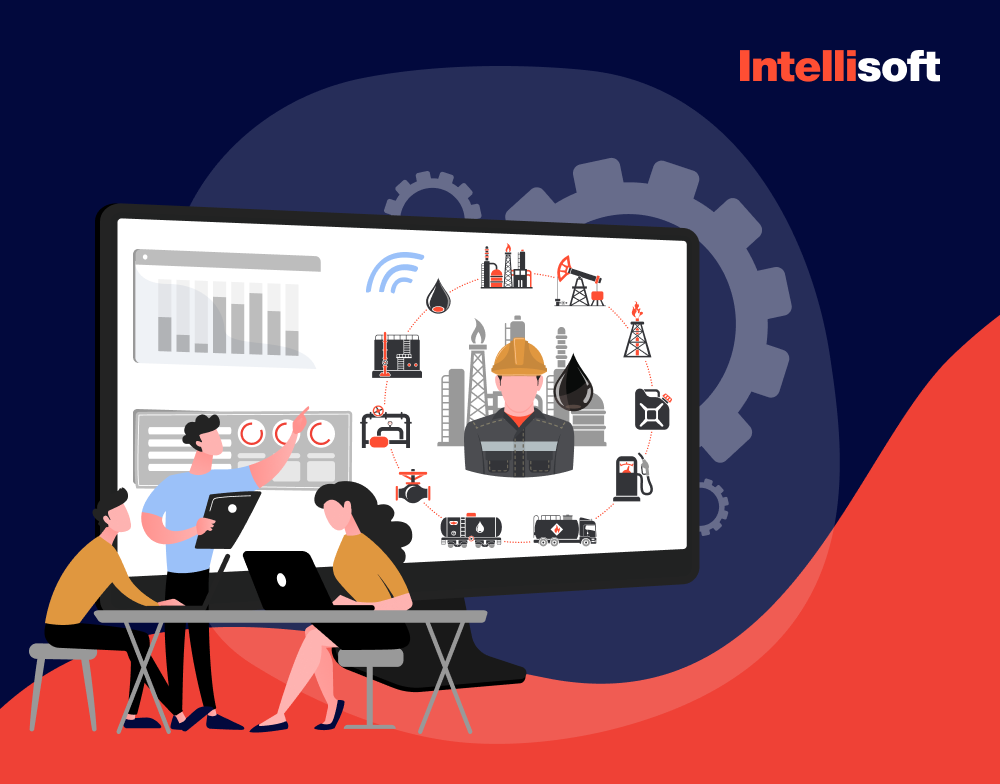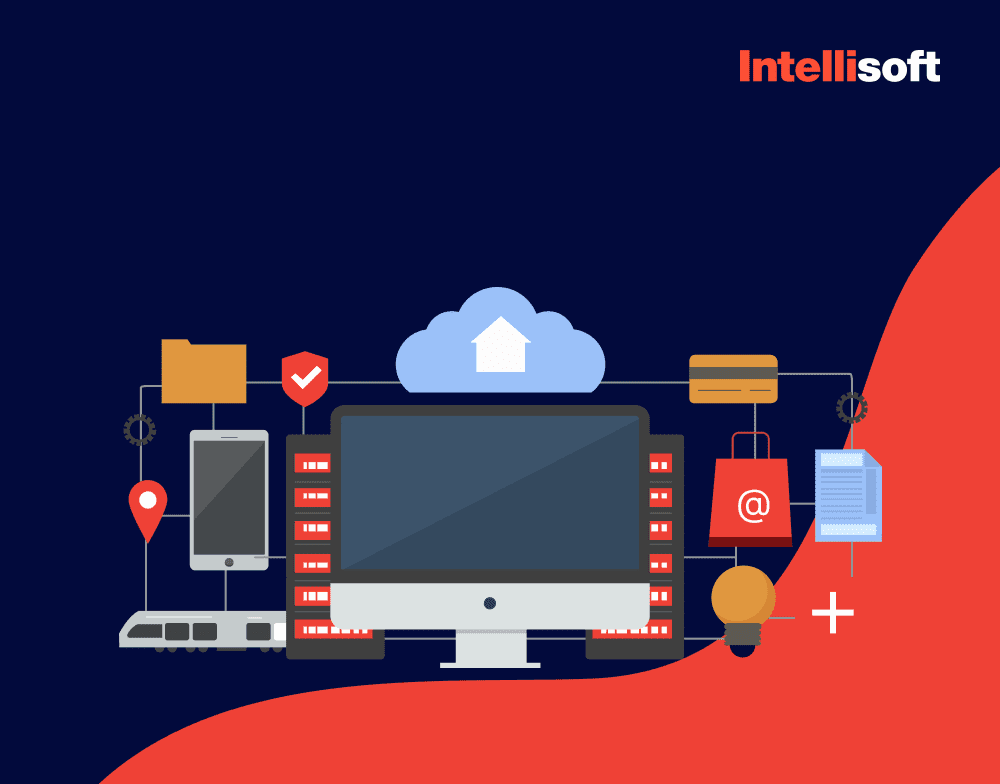From smart homes and healthcare to industries and cities, companies in all industries wonder how to control IoT devices. Smart refrigerators can notify you when you’re running low on groceries, wearable fitness trackers seamlessly sync data with mobile apps, and smart cities leverage IoT for efficient traffic management. Thus, it is unsurprising that the number of Internet of Things gadgets worldwide is forecasted to almost double by 2030, and the global market for IoT end-user solutions is expected to grow by around 1.6 trillion by 2025. This widespread integration underscores the growing importance of understanding how to effectively control and remotely manage IoT devices.
The following sections will explore the various methods, advantages, and difficulties of managing the Internet of Things network. This journey highlights that proficiency is crucial for navigating our digital future.
Table of Contents
What Is IoT Device Management?
The Internet of Things is a network of interconnected devices that enable a seamless data exchange between different instruments and systems. They are equipped with sensors that allow them to capture and store data that we may be unable to access physically. The data collected is often specific and can be used for various purposes. To gain insights from this data, we follow a four-step process:
- Data collection. Internet of Things instruments are equipped with various sensors that enable them to gather and analyze data from their surroundings. These sensors can detect a wide range of environmental factors, such as temperature, humidity, light, and sound. The data collected by these sensors can be as simple as a single reading or as complex as real-time video streaming.
- Data exchange. Internet of Things devices have the capability to transmit their collected data to either public or private cloud systems through a device-to-system-to-device mechanism or communicate with another remote instrument through a device-to-device mechanism. Alternatively, the devices can store the collected data locally and process it at the edge, provided that network connections are available.
- Data processing. At this point, software solutions play a critical role in processing data. They are specifically designed to analyze the input data and trigger appropriate actions based on it. For instance, a software solution can detect the temperature of a room and turn on a fan to cool it down. Similarly, it can alert the user of any suspicious activity on the network. These software solutions are programmed with sophisticated algorithms that enable them to process large volumes of data, identify patterns, and make informed decisions.
- Actions based on received data. This process involves collecting and analyzing data from all the interconnected instruments on the Internet of Things. This comprehensive analysis provides valuable insights that businesses can leverage to make confident and informed decisions. By harnessing the power of new technologies, companies can gain a deeper understanding of customer needs, market trends, and operational performance, ultimately leading to increased efficiency and profitability.
IoT Device Management is a comprehensive process that aims to ensure smooth network functioning. It involves various tasks such as providing access rights to authorized users, configuring instruments to suit their environment, monitoring device performance, diagnosing issues, and maintaining the ecosystem to ensure they are up-to-date with the latest security patches and firmware updates. This process is critical when you rely on wireless connectivity protocols such as Bluetooth, Wi-Fi, LoRa, etc. Effective management helps organizations to ensure their IoT ecosystems remain secure, reliable, and efficient.

How do IoT Device Control and Management Work?
IoT remote management systematically oversees and manipulates connected instruments within an Internet of Things ecosystem. To understand how it works, follow these key steps:
Device Connectivity
- Connection to the Network. Internet of Things gadgets connect to a network, enabling them to communicate with each other and external systems.
- Communication Protocols. Devices exchange data using different communication protocols, such as MQTT and CoAP. These protocols ensure standardized interaction between instruments.
Data Collection
- Sensor Data Acquisition. Devices with sensors gather real-time data about their environment or function.
- Data Transmission. Data that has been gathered is sent to centralized servers or cloud-based platforms for the purpose of storage and processing.
Remote Monitoring
- Real-time Insights. Centralized platforms provide real-time insights into remote management IoT device status, performance, and environmental conditions.
- User Interfaces. Users access intuitive interfaces to monitor gadgets remotely, allowing for proactive decision-making.
Control Commands
- User Input or Automated Triggers. Users or automated systems generate control commands based on monitoring outcomes, user preferences, or predefined triggers.
- Transmission to Devices. Control commands are transmitted back to the instruments over the network, influencing their behavior or settings.
Logging and Analytics
- Data Analysis. Centralized platforms analyze collected data, providing valuable insights into device performance and operational efficiency.
- Logging. Logging mechanisms record events, aiding in troubleshooting, performance optimization, and compliance tracking.
IoT Device Management Across Industries
Managing Internet of Things gadgets across different industries is vital to modern technology. Each industry has unique requirements and challenges. Let’s explore how IoT remote management plays a role in the sectors you mentioned:
- Manufacturing. Internet of Things instruments are commonly used in the manufacturing industry to monitor the health of equipment, automate production lines, and optimize supply chains (mostly in large enterprises, as 48% of them use the Internet of Things). The main focus of device management in this sector is to ensure the reliability and efficiency of machinery. This involves implementing predictive maintenance strategies to prevent equipment failures, real-time monitoring of production processes, and integrating IoT data into manufacturing execution systems for enhanced decision-making.
- Healthcare. The healthcare industry utilizes IoT for patient monitoring, asset tracking, and improving healthcare delivery. Effective and secure remote management of IoT devices is crucial for maintaining data privacy and security, given the sensitive nature of health information. It covers managing wearable gadgets for remote patient monitoring, ensuring the reliability of in-hospital equipment such as smart beds and infusion pumps, and integrating IoT data with electronic health records. The healthcare sector employs IoT technology to monitor patients, track assets, and enhance healthcare services. Given the sensitive nature of health information, ensuring the effective and secure remote management of an IoT device is vital to safeguard data privacy and security. This includes managing wearables for monitoring patients remotely, ensuring in-hospital equipment reliability such as smart beds and infusion pumps, and integrating IoT data with electronic health records.
- Agriculture. IoT technologies are becoming increasingly popular in agriculture, allowing for precision farming, livestock monitoring, and climate analysis. IoT device management in agriculture is focused on deploying and maintaining sensors and drones to monitor crop health, soil conditions, and weather patterns. This data helps farmers make informed decisions about irrigation, fertilization, and harvesting, ultimately leading to increased crop yields and sustainable practices.
- Transportation and Logistics. Internet of Things technology is being widely used in the transportation and logistics industry to improve fleet management, optimize routes, and track cargo. Device management is an essential aspect of this technology, as it involves ensuring the proper functioning of GPS trackers, telematics devices, and other sensors that provide real-time data on the location, condition, and environmental factors of vehicles. This information is crucial for optimizing routes, reducing fuel consumption, and enhancing transportation safety.
- Smart Buildings. Internet of Things instruments play a significant role in energy management, security, and building automation. Managing the entire ecosystem involves the integration of various sensors and systems for lighting, heating, ventilation, air conditioning (HVAC), and security. Effective device management optimizes energy usage, improves occupant comfort, and ensures building security.
A remote management IoT device is critical in various industries. The key aspects include ensuring connectivity, accurate data transfer, security, scalability, and interoperability with other systems. As the Internet of Things continues to evolve, these industries will benefit from enhanced efficiency, safety, and decision-making capabilities through advanced device management strategies. Most predictions indicate that this trend will continue in the near future.
Remote Control and Management in IoT: Key Protocols
Remote control and management in the Internet of Things heavily rely on various protocols, each designed to cater to specific requirements such as low bandwidth consumption, real-time communication, or security. Let’s explore the key protocols used in IoT devices.
MQTT
MQTT is a lightweight protocol optimized for high-latency or unreliable networks. It is particularly well-suited for remote connections where a small code footprint is essential, or network bandwidth is limited. Renowned for its efficiency, MQTT operates on a publish-subscribe model, making it highly scalable for any remote management IoT device. Its simplicity in implementation and operation, combined with various levels of Quality of Service for message delivery, make it a preferred choice for many Internet of Things scenarios.
CoAP
CoAP is a web transfer protocol specifically designed for constrained devices and networks in the IoT domain. It mirrors HTTP functionality, but provides minimal overhead and low power consumption. CoAP is unique in its ability to seamlessly integrate with HTTP for broader internet connectivity while maintaining a lightweight and energy-efficient profile suited for constrained environments. This protocol also features built-in service and resource discovery support, which is pivotal in dynamic Internet of Things ecosystems.
HTTP/HTTPS
HTTP, the foundation of data communication on the World Wide Web, and its secure counterpart, HTTPS, are extensively used in the Internet of Things for gadgets requiring integration with web-based services. Their ubiquity allows for seamless integration with various Internet services and applications. While less lightweight than MQTT or CoAP, HTTP/HTTPS offers robust security, especially HTTPS, which encrypts data for secure transmission. This security aspect is vital for IoT applications that handle sensitive data. Being a stateless protocol, HTTP/HTTPS facilitates independent requests, ensuring flexibility and scalability in IoT ecosystem management.
AMQP
AMQP is an advanced, open-standard application layer protocol known for its robustness, particularly in message-oriented middleware scenarios. It provides reliable and secure communication with strong message delivery guarantees, making it an ideal choice for enterprise-level IoT applications. AMQP’s interoperability across different technologies and vendors enhances its utility in diverse systems. It also supports complex routing and messaging patterns, catering to sophisticated and dynamic communication needs within the Internet of Things frameworks.
DDS
DDS is a high-performance middleware protocol standard, offering data-centric connectivity to enable real-time, scalable, and dependable data exchanges. Its suitability for real-time applications is a standout feature, making critical IoT systems such as autonomous vehicles or intelligent grid controls essential. DDS excels in scalability, efficiently handling small to extensive systems. Its comprehensive Quality of Service policies address various data distribution requirements, underlining its adaptability and effectiveness in varied Internet of Things scenarios.

Relevant articles:
- IoT: 5 Predictions
- IoT for Fleet Management in 2023: a Complete Guide
- IoT Data Integration with Existing Systems: Bridging the Gap to Legacy Infrastructure
How the Cloud Helps Ensure Remote Management for IoT Networks
Effective IoT remote management is now possible by integrating cloud computing with Internet of Things gadgets. The cloud offers several advantages that enhance systems’ scalability, efficiency, and functionality. Here is a detailed look at how this synergy works:
Centralized Data Storage
Cloud platforms provide centralized data storage, allowing remote access to real-time and historical information anywhere in the world.
Remote Monitoring and Control
Cloud-based solutions enable remote device monitoring and control, providing performance tracking, alerts, and settings adjustment without requiring physical proximity to the devices.
Over-the-Air (OTA) Updates
Cloud platforms enable remote software updates for IoT devices, improving security and functionality without physical intervention.
Data Analytics
Cloud-based analytics tools can process large volumes of data and extract valuable insights for remote decision-making, predictive maintenance, and device optimization.
Integration with Other Services
Cloud platforms often integrate with other services, such as machine learning, AI, and third-party applications, enhancing the capabilities of IoT networks for remote management.
A Step-by-Step Guide to Managing IoT Devices Remotely
In our ever-connected world, remotely managing IoT devices is becoming increasingly essential. Whether overseeing a smart home, an industrial setup, or a fleet of connected devices, mastering the art of remote IoT device management ensures efficiency and control. Here, we present a step-by-step guide to effectively manage your Internet of Things ecosystem from any location.
Hire development team
The first step is assembling a skilled development team, which is crucial for a remote management IoT device. Here’s how you can approach this:
- Define Your Project Requirements. Clearly outline the goals and objectives of your project. Consider the scale, scope, and specific needs of your Internet of Things deployment, such as the types of devices, data they will handle, and expected outcomes.
- Identify the Required Skill Sets. Determine the skills necessary for your project. This typically includes expertise in IoT protocols, network security, data analytics, cloud computing, and possibly machine learning, depending on the complexity of your project.
- Search for Talent. Look for candidates through industry networks, job portals, and tech forums. Focus on finding professionals with a proven track record in IoT development. Don’t overlook the importance of soft skills such as problem-solving, communication, and teamwork.
- Evaluate Technical Expertise. Conduct technical interviews and assessments to gauge candidates’ proficiency in relevant technologies and their ability to handle real-world problems.
- Consider Company Culture Fit. Ensure that the candidates align with your company’s culture and values. A team that resonates with your company’s ethos can significantly contribute to the project’s success.
- Provide Training and Resources. Invest in training and resources to support the formation of the team. This includes providing access to the latest development tools, platforms, and best practices. Continuous learning is key in the rapidly evolving Internet of Things field.
- Foster Collaboration and Innovation. Encourage a culture of collaboration, innovation, and open communication within the team. This approach will be instrumental in navigating remote IoT device management challenges and driving the project towards success.
You lay a strong foundation for effective and secure remote management of an IoT device by carefully assembling and nurturing a competent development team. This team will be instrumental in creating robust, scalable, and secure solutions that meet your specific requirements.
Assess Your IoT Ecosystem
- Understand Your Devices. Take stock of the types of gadgets in your ecosystem, considering their functionalities and communication protocols.
- Identify Critical Components. Pinpoint devices that are pivotal in your operations, prioritizing them for remote management.
Choose the Right Remote Management Platform
- Research Platforms. Explore and choose a remote management platform that aligns with the needs of your specific ecosystem.
- Consider Compatibility. Ensure the selected platform is compatible with your network’s diverse range of devices.
Establish Secure Connectivity
- Implement Encryption. Prioritize security by implementing robust encryption methods to safeguard data during remote communication.
- Authentication Protocols. Utilize robust authentication protocols to verify the identity of both users and devices.
Enable Remote Monitoring
- Real-Time Data Access. Set up systems for real-time monitoring, allowing you to access critical data and remote management IoT device status remotely.
- Alert Mechanisms. Implement alert systems to receive notifications for anomalies, ensuring timely responses to potential issues.
Set Up Remote Configuration and Control
- Adjust Device Settings. Enable the capability to remotely configure device settings, adapt to changing circumstances, or optimize performance.
- Control Commands. Implement secure channels for sending control commands to gadgets, facilitating seamless remote operations.
Implement Over-the-Air (OTA) Updates
- Firmware and Software Updates. Establish a process for remotely deploying OTA updates, ensuring devices have the latest features and security patches.
- Scheduled Maintenance. Plan for regular maintenance windows to minimize disruptions during updates.
Prioritize User Accessibility
- User-Friendly Interfaces. Ensure the remote IoT device management platform offers intuitive, user-friendly interfaces for easy navigation.
- Mobile Accessibility. Opt for platforms with mobile applications, providing flexibility for on-the-go monitoring and control.
What Are the Best Platforms for IoT Device Management?
The best platforms for IoT device management include:
- AWS IoT Core. Amazon Web Services provides a scalable and secure platform for IoT device management with features such as device registry, secure communication, and data processing.
- Azure IoT Hub. Microsoft Azure’s IoT Hub offers comprehensive device management capabilities, including provisioning, monitoring, and remote updates.
- Google Cloud IoT Core. Google Cloud’s IoT Core provides a fully managed service for device connectivity, management, and data ingestion with seamless integration into other Google Cloud services.
- IBM Watson IoT Platform. IBM’s platforms remotely manage IoT devices, provide real-time analytics, secure communication, and integration with artificial intelligence (AI) and machine learning (ML) services.
- ThingSpeak. An open platform by MathWorks, ThingSpeak enables users to collect, analyze, and visualize data with support for device management features.
- Bosch IoT Suite. Bosch’s IoT Suite provides a comprehensive set of services for device management, data analytics, and application enablement.
You can learn how to manage IoT devices in practice using these platforms.

What Are the Challenges Of Managing IoT Devices Remotely?
Managing the Internet of Things remotely brings challenges stemming from the diverse, distributed, and dynamic nature of these devices and their applications. Here are some of the key challenges:
Security and Privacy
Managing the network remotely introduces significant security and privacy concerns. These devices often possess inherent vulnerabilities due to limited processing capabilities, making them targets for cyberattacks. It is paramount to ensure the privacy of the data they collect and transmit, particularly in sensitive sectors such as healthcare. Moreover, maintaining secure communication channels to prevent unauthorized access and data breaches is critical to IoT remote management. As the number of gadgets increases, the complexity of safeguarding these networks from potential threats increases exponentially.
Scalability
The exponential growth of IoT instruments presents a formidable challenge in scalability. Managing an ever-increasing number of devices efficiently, without compromising performance, requires sophisticated and scalable architectures. Diverse devices and protocols complicate the standardization and integration process and characterize the entire ecosystem. This heterogeneity demands flexible and adaptive management systems that accommodate various devices and communication standards.
Interoperability and Compatibility
Interoperability is a major challenge in remote IoT device management, primarily due to the diversity of communication protocols used by different devices. This heterogeneity hinders seamless interaction and data exchange between devices. Besides, integrating new technologies with legacy systems is often complex and delicate, requiring careful planning and execution to avoid service disruptions.
Connectivity and Network Management
Ensuring consistent and reliable network connections for remote gadgets, particularly in areas with limited or unreliable connectivity, is a significant challenge. Managing the bandwidth requirements of numerous devices, especially those transmitting high volumes of data, is equally critical. Internet of Things network management involves maintaining connectivity and optimizing network performance to accommodate the unique needs of various applications.
Data Management and Analysis
IoT devices generate vast data amounts that must be efficiently stored, processed, and analyzed. Managing this data deluge, particularly for applications that require real-time processing and decision-making, presents significant computational challenges. Effective data management strategies are essential to extract meaningful insights from the data while ensuring its storage and processing are efficient and cost-effective.
Power Management
Many IoT devices are battery-powered, necessitating efficient energy management to prolong battery life. This includes optimizing the energy consumption of the devices themselves and remotely monitoring their power status. Effective power management is crucial to ensure the continuous operation of IoT devices, especially in remote or inaccessible locations.
Device Management and Maintenance
A secure remote management IoT device involves regular firmware and software updates to ensure optimal performance and security. However, updating a wide range of devices remotely while maintaining compatibility and stability can be challenging. Besides, remotely diagnosing and troubleshooting issues is critical to avoid service disruptions and maintain the reliability of IoT ecosystems.
Regulatory Compliance
Device management must also adhere to various regional and industry-specific data handling, security, and operation regulations. Navigating these regulatory landscapes and ensuring compliance is a complex task, especially given the global nature of many IoT deployments. Compliance protects against legal risks and enhances trust and reliability in Internet of Things systems.
User Experience and Accessibility
Ensuring that the management interfaces are intuitive and accessible is crucial when learning how to manage IoT devices. User experience should cater to diverse user needs and preferences, offering customization options for different applications and industries. An effective user interface enhances the usability of Internet of Things systems, making them more accessible and easier to manage, even for those with limited technical expertise.
IntelliSoft Experience
At IntelliSoft, we assisted the client in establishing connectivity with IoT devices, specifically air heaters, in challenging environments such as construction sites and remote fields with limited connectivity. Our development team utilized the MQTT client-broker protocol to achieve this, with AWS serving as the broker.
The core task involved writing code for a service that gathered and manipulated data from these heaters. This included adjusting the heating temperature and creating a calendar system akin to Google Calendar. This custom calendar allowed for scheduling specific heating events, dictating when and at what intensity the heaters should operate.
If you want to know how to control IoT devices and are ready to get professional assistance, contact us today!

